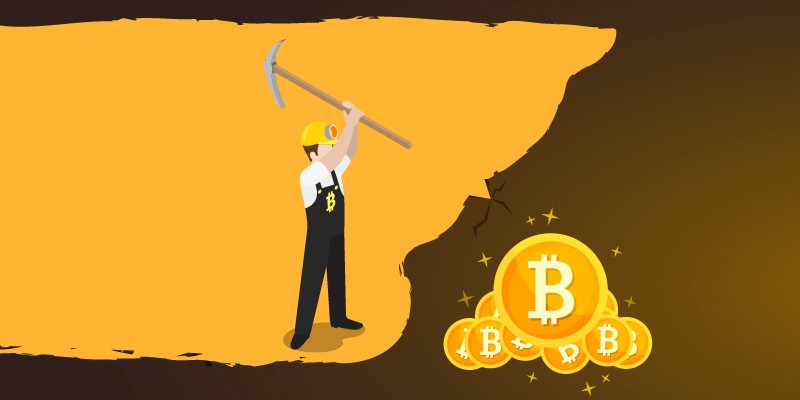What is Bitcoin Mining? Best Explanation
The transaction is now propagated on the bitcoin network. It does not become part of
the shared ledger (the blockchain) until it is verified and included in a block by a process
called mining. See “Introduction” on page 177 for a detailed explanation.
The bitcoin system of trust is based on computation. Transactions are bundled into
blocks, which require an enormous amount of computation to prove, but only a small
amount of computation to verify as proven. This process is called mining and serves
two purposes in bitcoin:
• Mining creates new bitcoins in each block, almost like a central bank printing new
money. The amount of bitcoin created per block is fixed and diminishes with time.
• Mining creates trust by ensuring that transactions are only confirmed if enough
computational power was devoted to the block that contains them. More blocks
mean more computation which means more trust.
A good way to describe mining is like a giant competitive game of sudoku that resets
every time someone finds a solution and whose difficulty automatically adjusts so that
it takes approximately 10 minutes to find a solution. Imagine a giant sudoku puzzle,
several thousand rows and columns in size.
If I show you a completed puzzle you can
verify it quite quickly. However, if the puzzle has a few squares filled and the rest is
empty, it takes a lot of work to solve! The difficulty of the sudoku can be adjusted by
changing its size (more or fewer rows and columns), but it can still be verified quite
easily even if it is very large.
The “puzzle” used in bitcoin is based on a cryptographic
hash and exhibits similar characteristics: it is asymmetrically hard to solve but easy to
verify, and its difficulty can be adjusted.
In “Bitcoin Uses, Users and Their Stories” on page 4 we introduced Jing, a computer
engineering student in Shanghai. Jing is participating in the bitcoin network as a miner.
Every 10 minutes or so, Jing joins thousands of other miners in a global race to find a
solution to a block of transactions. Finding such a solution, the so-called “Proof-ofWork”, requires quadrillions of hashing operations per second across the entire bitcoin
network.
The algorithm for “Proof-of-Work” involves repeatedly hashing the header of
the block and a random number with the SHA256 cryptographic algorithm until a
solution matching a pre-determined pattern emerges. The first miner to find such a
solution wins the round of competition and publishes that block into the blockchain.
Jing started mining in 2010 using a very fast desktop computer to find a suitable Proofof-Work for new blocks. As more miners started joining the bitcoin network, the dif‐
ficulty of the problem increased rapidly. Soon, Jing and other miners upgraded to more
specialized hardware, such as Graphical Processing Units (GPUs), as used in gaming
desktops or consoles. As this book is written, by 2014, the difficulty is so high that it is
only profitable to mine with
Application Specific Integrated Circuits (ASIC), essentially
hundreds of mining algorithms printed in hardware, running in parallel on a single
silicon chip. Jing also joined a “mining pool”, which much like a lottery-pool allows
several participants to share their efforts and the rewards. Jing now runs two USBconnected ASIC machines to mine for bitcoin 24 hours a day. He pays his electricity
costs by selling the bitcoin he is able to generate from mining, creating some income
from the profits. His computer runs a copy of bitcoind, the reference bitcoin client, as
a back-end to his specialized mining software

No comments: